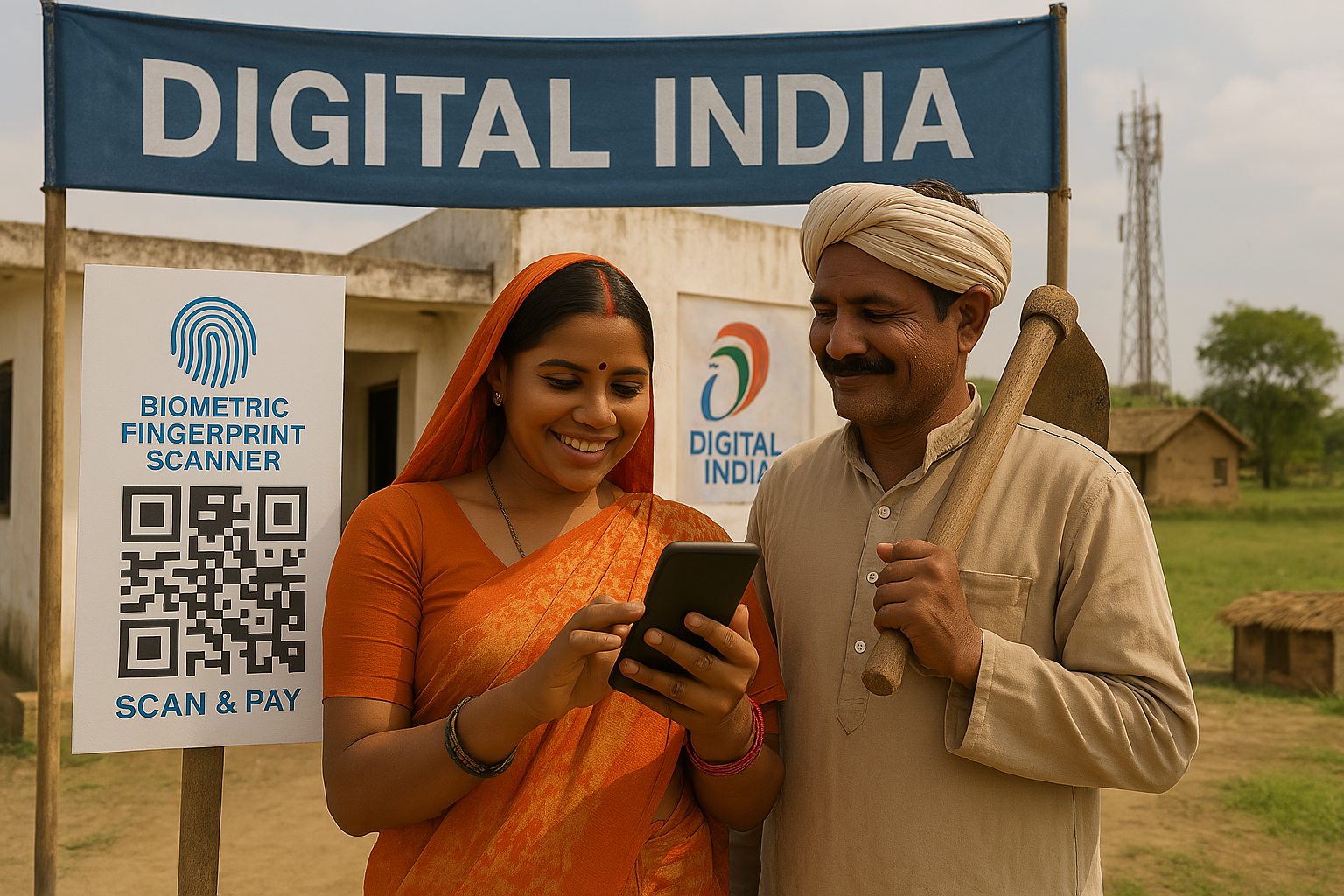
A Scene from Rural India
In a far-flung village in Odisha, punishment is being meted out like a government subsidy through an Aadhaar-bank fingerprint transaction. A shopkeeper in a small town of Madhya Pradesh is accepting payments through UPI by scanning a QR code. In Bihar, a young woman applies for a loan through a mobile app in her own language at any bank branch. These are not isolated success cases. They are the silent, everyday examples of a revolution in progress-the Digital India initiative, which has changed the meaning of being connected, included, and empowered in rural India.
A while ago, I remember reading an article in The Hindu that described technology eliminating the middleman in the rural parts of India. What impressed me most was not just the statistics but the tone of hopeful optimism that was conjured throughout the article-everyone was talking about the right men getting their direct benefit transfers, women in rural areas holding their own bank accounts, and UPI payments now being an accepted mode of transaction in weekly village markets. So it dawned upon me: Digital India is no longer a myth-theoretical idea. It is a living reality, changing the rural economy in its own way, unlike those unimaginable paths from about a decade ago.
Technology as an Equalizer
At the core of this transformation is access,to identity (Aadhaar), to money (Jan Dhan), and to information (mobile internet). This secure ecosystem of JAM allows rural citizens to enter into the formal economy, mostly for the first time.
Middlemen have become an anachronistic set of gatekeepers for banks, benefits, and markets, as digital rails step in. The tools provide one-on-one access, lowered costs, and enhanced transparency. Using a fingerprint, a PIN, or a QR code, rural India is emerging from behind the curtain of red tape and walking onto the stage of self-determination.
Policy and Fintech
The domestic movement combines public infrastructure with private innovation to create a lasting supply chain. Programs such as PMJDY, PMGDISHA, and BharatNet formed just the foundation. Fintechs are building atop this foundation, giving microloans, crop insurance, and savings products for rural needs.
Where bank branches are scarce, AEPS and UPI offer a form of currency of trust. The Loop app of Digital Green allows farmers to link with buyers, while Bank Mitras, local banking correspondents with mobile devices, are building digital confidence from households upward.
Need for Financial Literacy
Access is not sufficient. Consider that literacy is an often neglected component in this transformation: reading literacy and digital navigation. While 96% of rural users say they want to save and invest digitally, they do not possess adequate know-how in more than 50% of cases. That's when Internet Saathi and PMGDISHA Empowerment, especially for rural women, came into existence.
As we go ahead, we must consider inclusive design, local languages, voice interfaces, and training with respect to culture.
Real Impact on the Ground
Beyond any policy paper stands the postulates of Digital India. Today, pensioners, subsidy providers, and employees under the central government receive their payments in their bank accounts, eliminating the middlemen and leakage. Small businesses in Tier-3 and Tier-4 towns have accepted digital payments, breaking away from cash transactions. Slowly, informal borrowing is giving way to formal credit and microfinance, opening a path to dignity in finance. What really speaks, more than the numbers, is the change of consciousness: people, even at the remotest of corners, feel empowered to make financial decisions for themselves. What began as the Government's intent has now blossomed into a fertile ecosystem that has taken the conversion of digital access from privilege to a basic right.
A Personal Reflection & The Road Ahead
Digital India is not merely fiber optic cables or mobile apps; it stands for dignity and agency. It is for a farmer who doesn't need to count on a middleman anymore, a grandmother who checks her account balance with a thumbprint, and a student who applies for scholarships sans bribes. This article was inspired by one from The Hindu that showed the very human side of the digital revolution, how policies and pixels silently change lives. Nevertheless, we still have connectivity woes, cyber threats, and the digital gender divide. However, with the right interventions that are infused with empathy, nothing is impossible. While not perfect, Digital India is nevertheless immensely powerful, and this revolution has to be nurtured.





Write a comment ...